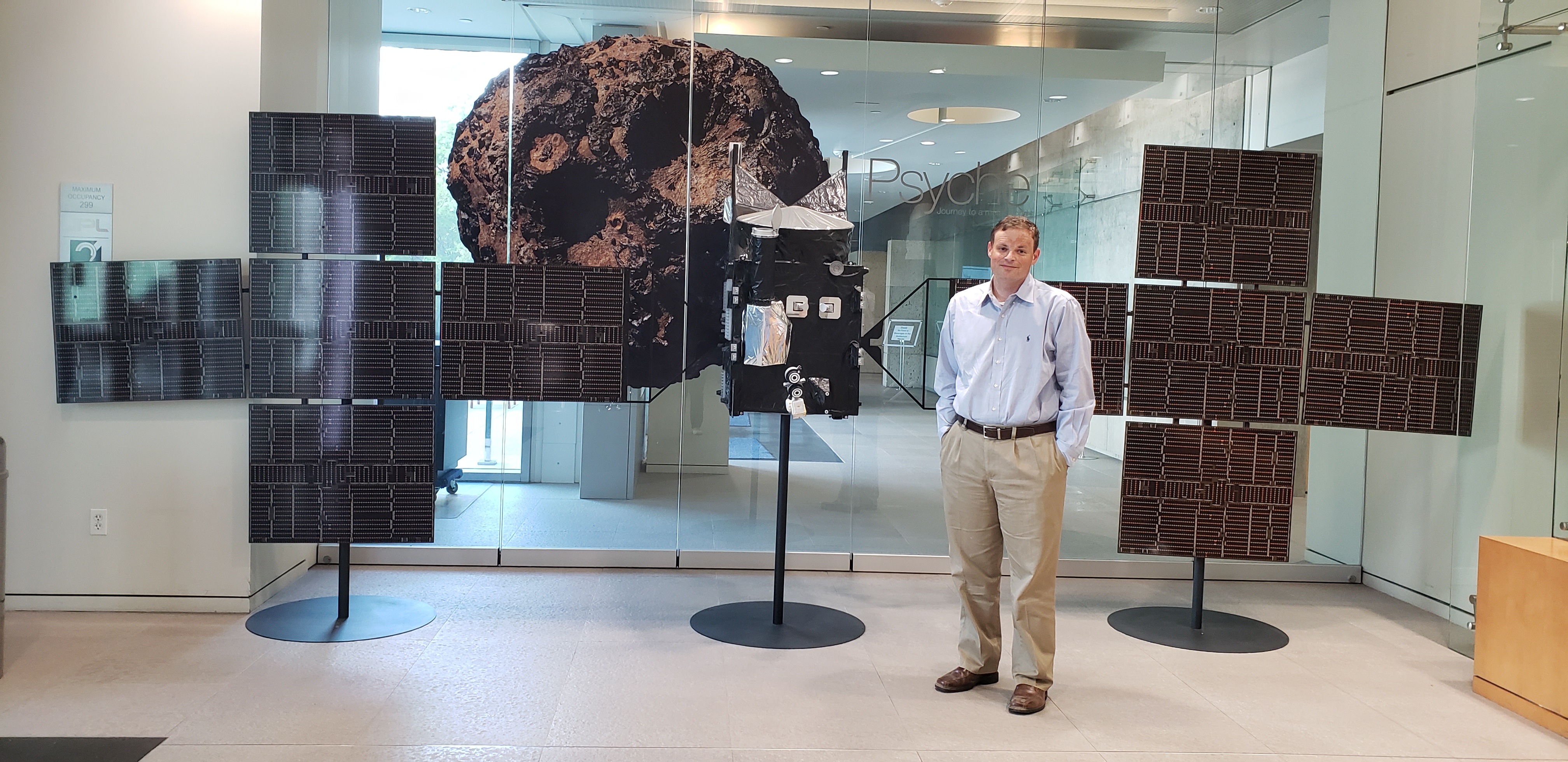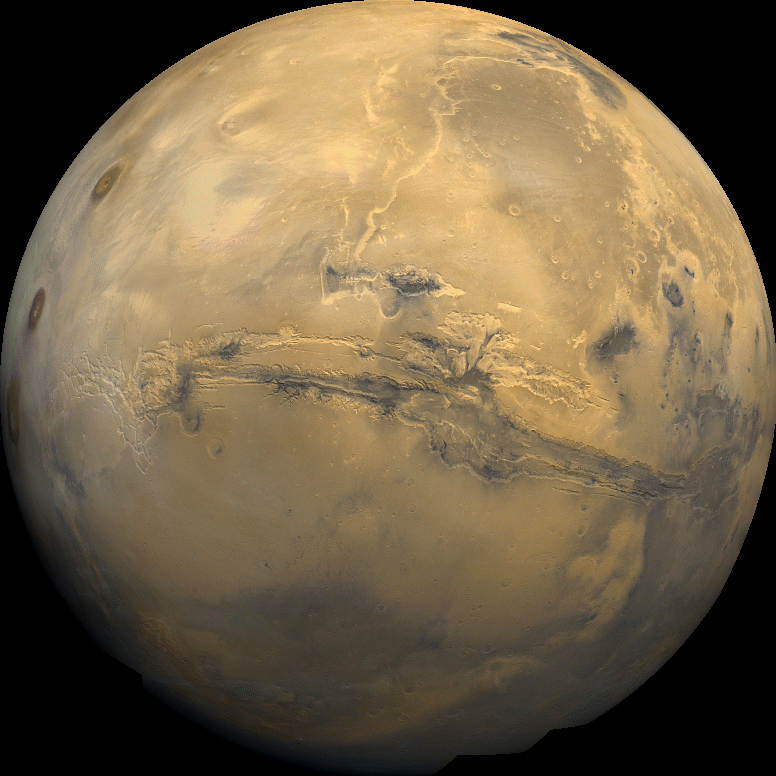
William (Bill) Hart
Deputy Project Systems Engineer, SPHEREx
William (Bill) Hart works at NASA’s Jet Propulsion Laboratory (JPL) in Southern California. He is deputy project systems engineer for NASA’s SPHEREx (Spectro-Photometer for the History of the Universe, Epoch of Reionization and Ices Explorer) mission. Astronomers will use SPHEREx to gather data on more than 300 million galaxies, and more than 100 million stars in our own Milky Way. Hart previously worked on the project systems engineering team for NASA’s Psyche mission to an asteroid by the same name. Hart is from Kirkwood, Missouri. He has a B.S. in Mechanical Engineering from the University of Notre Dame in Indiana, and both an M.S. and PhD in Aeronautics and Astronautics from Stanford University in California.

When I was five years old, my parents and I went on vacation to Florida. Along with the usual places like the beach and Disney World, we toured Kennedy Space Center. I remember seeing the Saturn V rocket that was on display there, sitting on its side. I was in awe of the sheer size of this rocket, larger than most buildings. I couldn’t believe that something this massive actually left the ground, let alone went into space.
A few days later, we were driving back to the airport. Looking back out of the rear window, I saw a plume of fire shoot off the ground and gradually veer up into the sky. I asked my parents, “What is that?” And they told me that it was a rocket launch. As it turned out, it was a space shuttle.
From that moment, I was hooked. Throughout grade school, I was regularly drawing spaceships, trying to come up with my own designs. I was also reading lots of books about the various planets in the solar system. One thing that surprised me was that we didn’t know very much about the outer planets, like Uranus and Neptune. Then Voyager 2 did its flyby in the late 1980s, sending us close-up pictures of those planets.
During my undergraduate days, I was involved in a research project sponsored by JPL to develop controls to instruct wheeled robots to move among locations by selecting visual cues from onboard cameras. It was a challenging project, and there were a lot of failures before we finally succeeded. I still remember the joy in the room the first time the project worked as intended.
In graduate school, I spent time working in the Space Systems Development Lab, run by Stanford University. (It became the Space Environments and Space Systems Lab in 2017, well after I left). At the time, CubeSats were still in their infancy. Most of them were launched by universities. I had no idea how useful they would become. They are now even being used for interplanetary missions, like MarCO, the first and second interplanetary CubeSats. They were launched to monitor the Mars InSight lander.
After that, I worked for a company based in the San Francisco Bay Area that makes communication satellites that operate in geosynchronous orbit. These satellites were much larger, and more complex than those I worked on in graduate school. I spent about nine years there, which gave me a lot of hands-on, practical experience working on multiple different types of flight hardware.
I am currently the deputy project systems engineer for a NASA mission called SPHEREx. SPHEREx will perform an all-sky survey in near-infrared wavelengths, which is something that we haven’t done before (near-infrared light is just beyond the visible spectrum). Having a survey of this magnitude will complement existing observatories in other wavelengths, and help answer a variety of astrophysics questions, ranging from the origins of galaxies to the sources of water in systems beyond our solar system.
Systems engineer is kind of a nebulous role. I often joke that if you ask five systems engineers what the role means to them, you will get five different answers. For myself, spacecraft are systems, made up of many subsystems that contain multiple intricate pieces of hardware. These subsystems are typically managed by one or more engineers, but the interfaces between these subsystems are varied and complex. Someone (or a group of people in Psyche’s case) must manage those interfaces – how they interact with one another, and how a change can affect the performance of the whole spacecraft.
As for how those interfaces are managed? Well, there are a variety of ways. On any given day, I might be carrying out a trade study to determine how the subsystems should interact with each other. Or I might be developing or implementing a requirement that governs how the subsystems should perform. I might be writing a code or spreadsheet to make sure that a system is performing as it should, or I may be writing a test procedure that validates its performance. All of these tasks involve working with different engineers, asking questions, and gathering their assessments. Every day is a busy one, and I never know what will come across my desk when I walk in the door.
As I mentioned earlier, there are many different types of systems engineers. Anyone interested in the job should get a chance to experience as many of those categories as possible. They may find an area that is perfect for them, and that they had never thought about before.
Also, one of the most underrated aspects of being a systems engineer is human interaction. Being able to work together with people – and to encourage them in a team setting – is critical when it comes to large projects such as those that I work on.
My grandfather was a great source of inspiration for me growing up. He was an entomologist who studied the effects insects had on various regions of the country. He worked for the U.S. Department of Agriculture, and was a principal investigator on some of the remote sensing experiments that were performed on Skylab, America’s first space station.
I’m also inspired by my two kids. They are smart and inquisitive, always asking me and my wife Shirley about the projects that we work on (Shirley is an engineer and also worked on Psyche). A few months ago, I was fortunate enough to take them to JPL to see the Psyche spacecraft. It was great for the two of them to see it in person. It was even better when they started asking my colleagues insightful questions about it!
The Psyche mission was one of the most exciting projects that I’ve had the privilege of working on. Asteroid Psyche is not just an unexplored planetary body, but a type of planetary body that hasn’t been explored before. Asteroids like Psyche, with potentially high metal content, could have wildly different characteristics than those that we have visited before. For me, building a spacecraft to explore new worlds is one of the coolest things I could possibly do, and I’m very fortunate to have had the opportunity to do that here at JPL.
I’ve also had the opportunity to work on the early stages of formulating proposals for several different spacecraft. It is fascinating to meet up with various planetary scientists, astrophysicists, and other scientists to learn what questions they have about the origin and nature of our solar system and beyond. And it is rewarding to be part of a team coming up with a spacecraft that will help answer these questions, and expand humanity’s knowledge.
I always have a book on the table. I enjoy reading history books, especially those about the space program. I’m also a big fan of hard science fiction, which is a category of science fiction heavily based in scientific accuracy or logic. My wife and I also like playing board games, and we are always on the lookout for new ones to add to the collection, as well as ones that we can play with the kids.
Another fun hobby of mine is papercraft, making intricate models out of cardstock. In my office, I have two paper rockets on my desk that stand four feet tall, one of them a Saturn V. They always seem to get a reaction from a colleague walking into my office for the first time. I also enjoy writing. The Psyche team has a blog on the website Medium where we talk about aspects of the project.
There is a mosaic of the Valles Marineris region of Mars that is made up of many images taken by the Viking orbiter. It is a visually striking image to me. I’m looking forward to adding to that detail someday, through a spacecraft that I help construct.

